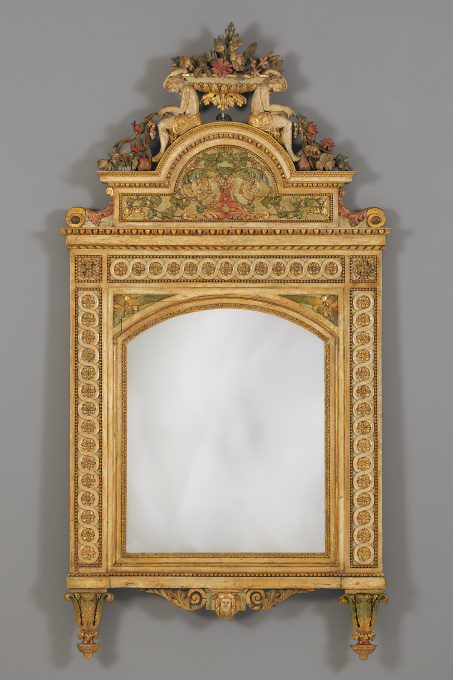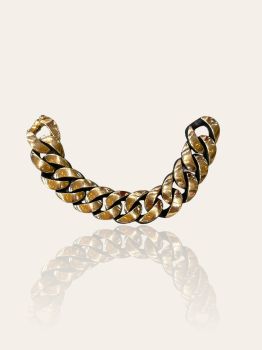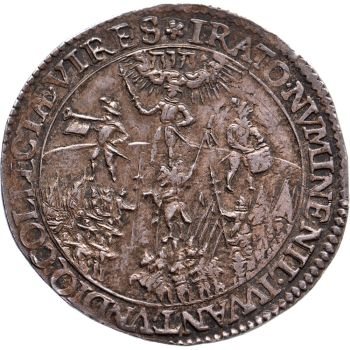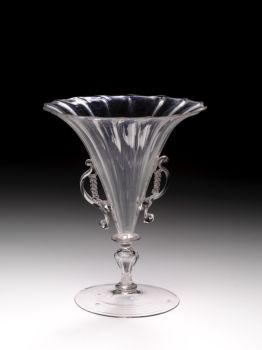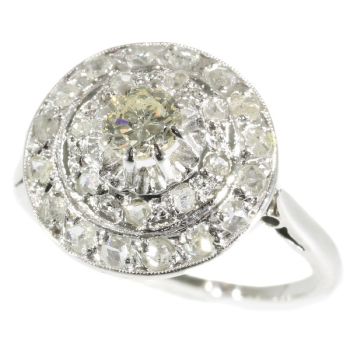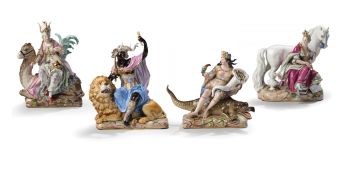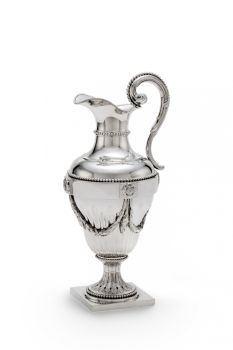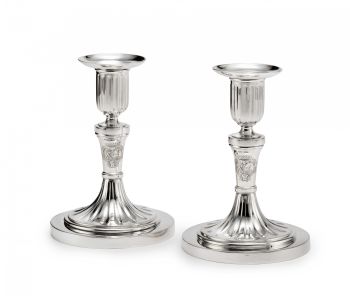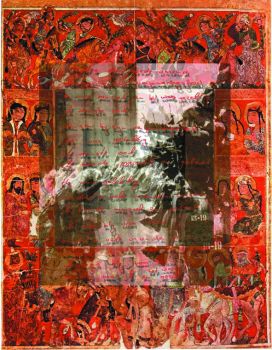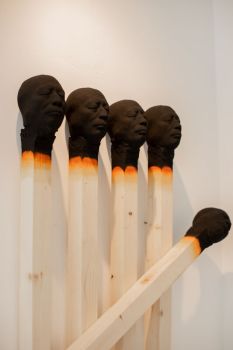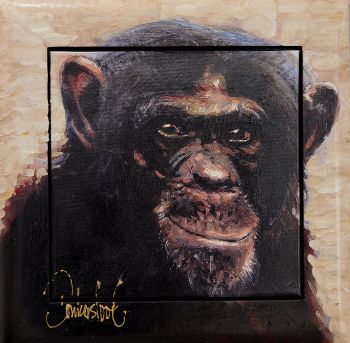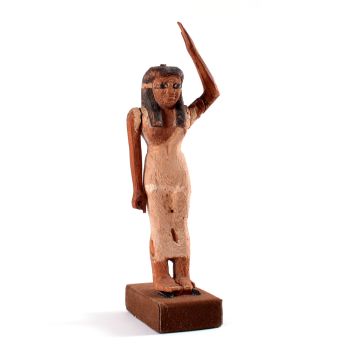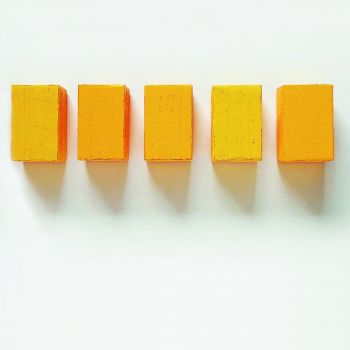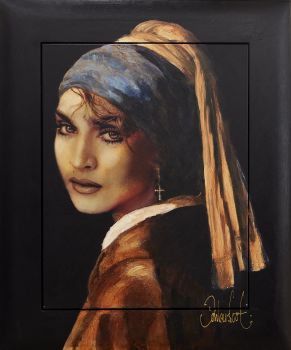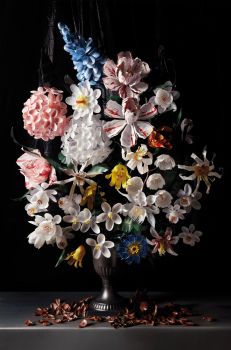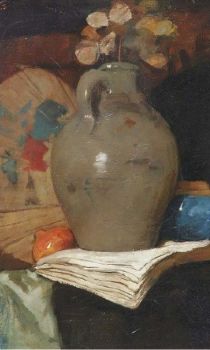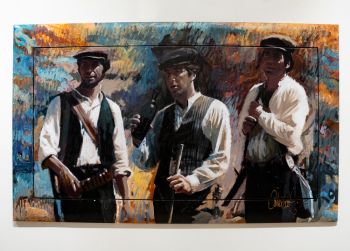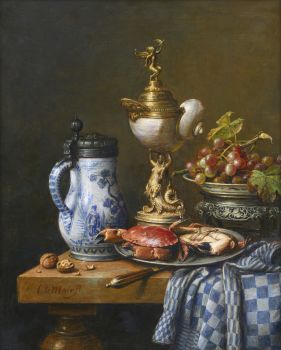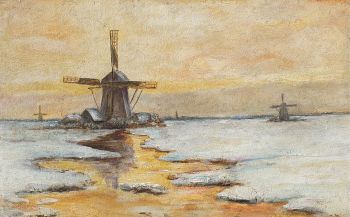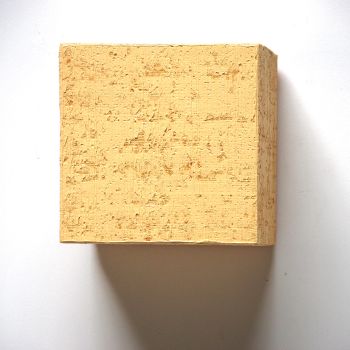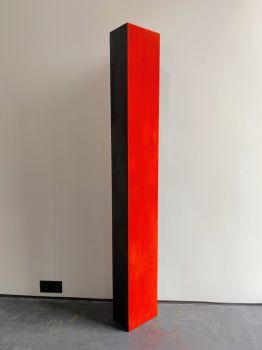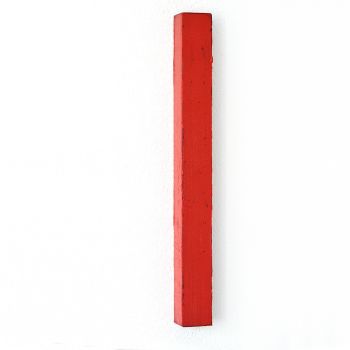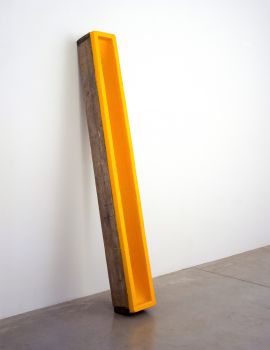An Italian Mirror in the manner of Giuseppe Maria Bonzanigo 1790
Artiste Inconnu
Bois doréBois
169 ⨯ 88 cm
Actuellement indisponible via Gallerease
- Sur l'oeuvre d'artA finely sculpted elegant Italian mirror. The frame is decorated with entrelacs of rosettes within rectangles with beaded edges. The upper corners are adorned with acorns and oak leaves in square medallions. On the inside an additional frame with an arched top and a beaded edge is mounted. The upper corners are decorated with triangular leaf motifs.
The frieze is decorated with an egg and dart edge and topped with a tympanum adorned with floral branches. The mirror is crowned with two sitting men in a loincloth carrying a flower basket. The figures are each carrying a finely sculpted branch with flowers and fruits.
The bottom is decorated with a skirting in the shape of a portrait medallion flanked by volutes of acanthus. The mirror rests on two conical feet decorated with acanthus leaves.
The mirror is polychromed and parcel gilt with a transparent lacquer finish.
Giuseppe Maria Bonzanigo (1745-1820)
From 1787 onwards, Bonzanigo worked at the Royal court of Savoy. The work that has been attributed to him is considered to be the pinnacle of Italian Neoclassicism. His work is characterized by the distance he took from the traditional Franco-Piedmont tradition of furniture making. Born in Piedmont he moved to Turin in 1773 to work as sculptor, woodcarver and cabinet maker. He soon received the favour and protection of the royal family. He worked from Turin until the French invasion of 1796.
After the defeat of Napoléon in 1815, when the house of Savoy returned to power, he was again appointed cabinet maker of the court. Although his work shows an undeniable French influence, there is no proof of Bonzanigo ever visiting Paris.
Literature:
Giancarlo Ferraris, Guiseppe Maria Bonzanigo e la scultura decorativa in legno a Torino nel periodo Neoclassico (1770-1830), Torino 1991 - Sur l'artiste
Il peut arriver qu'un artiste ou un créateur soit inconnu.
Certaines œuvres ne doivent pas être déterminées par qui elles sont faites ou elles sont faites par (un groupe d') artisans. Les exemples sont des statues de l'Antiquité, des meubles, des miroirs ou des signatures qui ne sont pas claires ou lisibles, mais aussi certaines œuvres ne sont pas signées du tout.
Vous pouvez également trouver la description suivante :
•"Attribué à …." A leur avis probablement une oeuvre de l'artiste, au moins en partie
•« Atelier de …. ou « Atelier de » À leur avis, une œuvre exécutée dans l'atelier ou l'atelier de l'artiste, éventuellement sous sa direction
•« Cercle de… ». A leur avis une oeuvre de la période de l'artiste témoignant de son influence, étroitement associée à l'artiste mais pas forcément son élève
•« Style de … ». ou "Suiveur de ...." Selon eux, une œuvre exécutée dans le style de l'artiste mais pas nécessairement par un élève ; peut être contemporain ou presque contemporain
•« Manière de… ». A leur avis une oeuvre dans le style de l'artiste mais d'une date plus tardive
•"Après …." A leur avis une copie (quelle qu'en soit la date) d'une oeuvre de l'artiste
•« Signé… », « Daté… ». ou « Inscrit » À leur avis, l'œuvre a été signée/datée/inscrite par l'artiste. L'ajout d'un point d'interrogation indique un élément de doute
• "Avec signature ….", "Avec date ….", "Avec inscription …." ou "Porte signature/date/inscription" à leur avis la signature/date/inscription a été ajoutée par quelqu'un d'autre que l'artiste
Artwork details
Related artworks
Artiste Inconnu
Icône russe représentant une Deesis étendue1600 - 1650
Prix sur demandeKunsthandel H.W.C. Dullaert Icons
1 - 4 / 12- 1 - 4 / 7
Artiste Inconnu
UN MODÈLE JAPONAIS D'UN NORIMONO, UN PALANQUIN1650 - 1700
Prix sur demandeZebregs & Röell - Fine Art - Antiques
 Sélectionné par
Sélectionné parDanny Bree
Artiste Inconnu
A rare Japanese export lacquer medical instrument box1650 - 1700
Prix sur demandeZebregs & Röell - Fine Art - Antiques
1 - 4 / 24Artiste Inconnu
UN MODÈLE JAPONAIS D'UN NORIMONO, UN PALANQUIN1650 - 1700
Prix sur demandeZebregs & Röell - Fine Art - Antiques
Cornelis Rudolf Hendrik Spoor
STILLEVEN | JUDASPENNING IN EEN VAAS1867 - 1928
Prix sur demandeGalerie Het Noorderlicht
1 - 4 / 24

